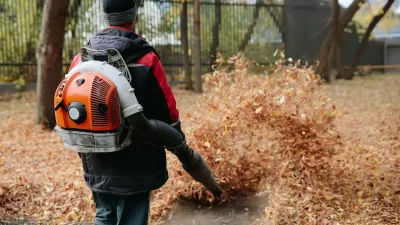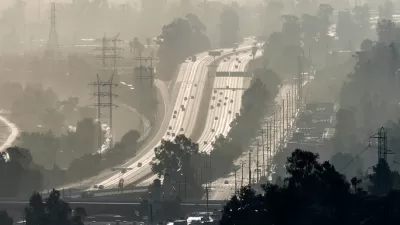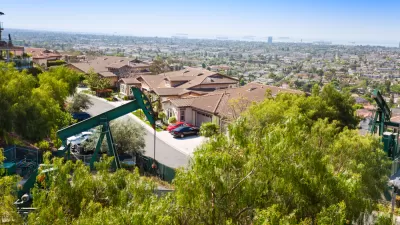The reforestation of Detroit has become a problem for allergy and asthma sufferers in the area.

In 1950 an estimated 1.8 million people lived in Detroit; today that number is closer to 700,000. The land left behind has created an opportunity for plants to reclaim space. "Plants and weeds grow with abandon in the newly exposed soils, and, during their growing seasons, those plants release their pollen loads into the air and into Detroiters’ airways," Lucas Joel writes for Undark Magazine.
Pollen can be an irritant for allergy sufferers and it can worsen asthma attacks. "Detroit currently ranks in the top 10 cities in the U.S. for asthma-related deaths, and a 2016 report revealed that 43.2 percent of asthma-afflicted children who were enrolled in Medicaid in the city had one or more emergency room visits per year for asthma, while the same figure for children in the rest of Michigan stood at 27.5 percent," reports Joel. While the issue of public health involves more than the presence of pollen, pollen is a factor. To make matters worse, it’s difficult to track how much pollen circulates in the area. The only pollen counter is located outside the center of the city, and what’s more, experts believe that pollen counts vary even at the neighborhood level.
Daniel Katz at the University of Michigan School of Public Health is trying to get to the bottom the question of where the pollen is with measuring devices. Katz hopes that mapping the type and volume of pollen around the city can help better inform officials and allergy sufferers as to where the pollen is and how to deal with it.
FULL STORY: As the Forest Moves Back in, Pollen Is on the Rise in Detroit

Trump Administration Could Effectively End Housing Voucher Program
Federal officials are eyeing major cuts to the Section 8 program that helps millions of low-income households pay rent.

Planetizen Federal Action Tracker
A weekly monitor of how Trump’s orders and actions are impacting planners and planning in America.

Ken Jennings Launches Transit Web Series
The Jeopardy champ wants you to ride public transit.

Washington Legislature Passes Rent Increase Cap
A bill that caps rent increases at 7 percent plus inflation is headed to the governor’s desk.

From Planning to Action: How LA County Is Rethinking Climate Resilience
Chief Sustainability Officer Rita Kampalath outlines the County’s shift from planning to implementation in its climate resilience efforts, emphasizing cross-departmental coordination, updated recovery strategies, and the need for flexible funding.

New Mexico Aging Department Commits to Helping Seniors Age ‘In Place’ and ‘Autonomously’ in New Draft Plan
As New Mexico’s population of seniors continues to grow, the state’s aging department is proposing expanded initiatives to help seniors maintain their autonomy while also supporting family caregivers.
Urban Design for Planners 1: Software Tools
This six-course series explores essential urban design concepts using open source software and equips planners with the tools they need to participate fully in the urban design process.
Planning for Universal Design
Learn the tools for implementing Universal Design in planning regulations.
Heyer Gruel & Associates PA
Ada County Highway District
Institute for Housing and Urban Development Studies (IHS)
City of Grandview
Harvard GSD Executive Education
Toledo-Lucas County Plan Commissions
Salt Lake City
NYU Wagner Graduate School of Public Service





























